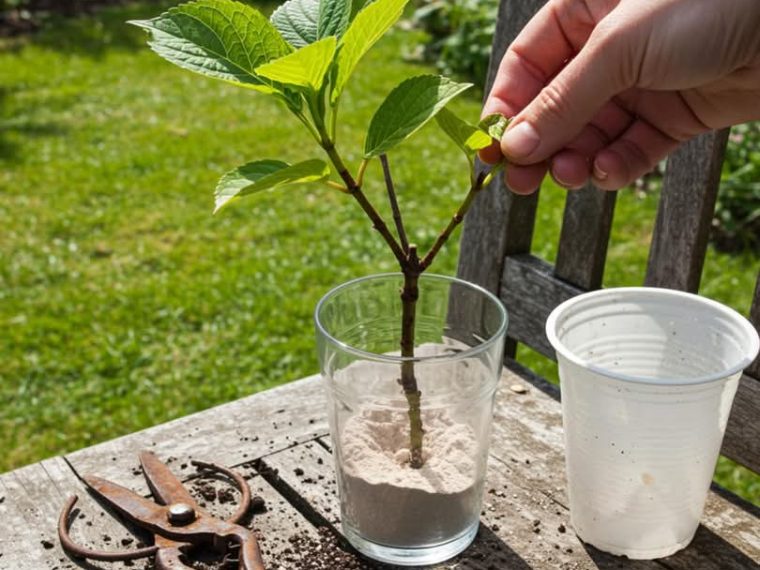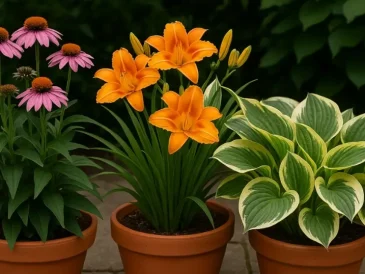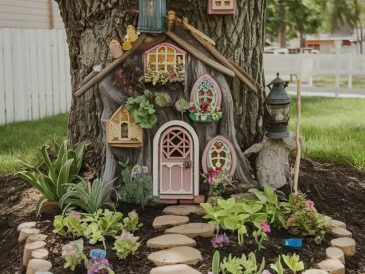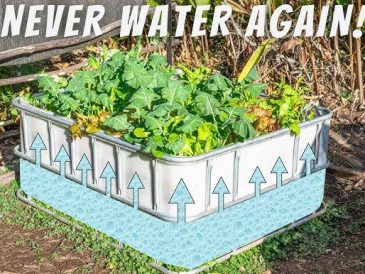I’ve written tons of articles on propagating hydrangeas in the past, and it has genuinely been quite a fun ride. Many have found those articles to be very helpful, while others look for deeper, more comprehensive answers to their hydrangea queries.
This article is perhaps going to be the most detailed and comprehensive guide on hydrangea propagation you’ll find on the internet. So, buckle up and prepare to learn everything!
When Is The Best Time To Propagate Hydrangeas?

Statements like “propagate your hydrangeas during x or y month” are generally too vague for most gardeners, believe me!
It doesn’t take into consideration the particular hydrangea variety or the environmental conditions that person might be working with. As a general guideline:
- Acquire softwood cuttings between late spring and early summer, as that’s when the stems are somewhat young and flexible. May to July would be the ideal timeframe to do this.
- Take hardwood cuttings between late fall and mid-winter since your hydrangeas will most probably have gone dormant around this time. October to February is the best timeframe for this task.
Keep in mind that the climate zones you’re working in matter, and propagation timings will vary drastically depending on whether you’re in a cooler or warmer zone.
And if you’re as hydrangea-obsessed as I am, here’s a list of fun facts and tips every hydrangea owner should know, you might learn something surprising.
The Two Main Methods – Softwood Vs. Hardwood Cuttings

What Are Softwood Cuttings?

Softwood cuttings are significantly greener with fresh and flexible growth.
You’ll find that these are not as woody and root more quickly compared to other hardwood types. Despite this, softwood cuttings are still relatively delicate.
Take these anytime between May and July, depending on the climate conditions you’re working with.
What Are Hardwood Cuttings?

Though this may sound counterproductive, hardwood cuttings are best taken in late fall to early winter after the leaves drop. Unlike softwood cuttings, these are much more woody and easy to snap.
Rooting time for hardwood cuttings can be comparatively slow, but definitely much more dependable in the long term.
How To Take Softwood Cuttings (Step-By-Step)

1: Select the right stem

Like with propagating any plant, you want to pick the healthiest-looking parent plant and acquire fresh stem cuttings that have no rot or unwanted fungal spots on them. Try your best to keep the cuttings relatively short and tidy; anywhere between 4-6 inches is ideal.
2: Prepare the cutting

In order to prepare your softwood cuttings, you want to remove all leaves from the lower third of the stem and only leave a few leaf nodes (I also like to cut the tips of the leaves but that’s optional).
If you want faster rooting, I’d suggest dipping your cuttings in rooting hormone, but this is completely optional.
3: Plant and cover

When it comes to planting, the soil type and texture are two very important variables. Generic potting soil works great, but so does a sand/peat mix, as long as it’s given adequate moisture.
Since hydrangeas prefer humidity for optimal rooting and growth, cover your plant with some sort of plastic dome or bag to trap humidity inside.
4: Care while rooting

You can’t just let your cuttings be once you plant them. They need love and attention to root properly. Keep them in bright, indirect light and, instead of heavy watering, mist them lightly from time to time. Proper care should get the stems rooting in about 2-4 weeks.
And once they’re rooted and transplanted to their final spot, take a look at these tips to help your hydrangeas bloom even bigger and brighter as they grow.
How To Take Hardwood Cuttings (Step-By-Step)

1: Choose a mature stem

When it comes to hardwood cuttings, what matters more than picking fresh and healthy stems is looking for mature ones. It should ideally be the same year’s growth that has turned dry and woody.
2: Cut and prepare

Like with softwood cuttings, cut your stems up to 6 inches and remove most of the leaves. You can optionally dip them in rooting hormone for faster rooting.
3: Plant and wait

Unlike softwood cuttings, hardwood can withstand a lot more clumsiness and pressure from harsh conditions. So, you can actually plant your cuttings outdoors in the garden soil or a cold frame.
Since these cuttings can take longer to root, you’ll have to gather up a lot of patience to wait till spring to get them to start rooting.
That said, you can’t just stick them in the ground and forget about them! They still need a bit of care to root properly. Keep the area lightly moist and make sure they get bright, indirect light. With a little attention, they’ll quietly do their thing over the winter and be ready to grow once warmer days arrive.
Rooting Without Hormone – Does It Work?

Yes, ofcourse it works! Most cuttings, especially softwood cuttings, can grow reasonably well without ever needing rooting hormone.
As a matter of fact, most old-school gardeners don’t even use rooting hormones.
For example, my dad just sticks everything straight into the soil (no hormone, no anything) and somehow, almost everything takes root and grows like nothing ever happened. I remember watching him as a kid and thinking, “Wow, propagating plants is easy!” That is, until I tried it myself… and everything dried up within days. Let’s just say it was a humbling moment!
So, rooting hormone is just something the new era of gardeners is starting to adopt now.
If you want to see the actual difference rooting hormone makes, try planting some of your cuttings with rooting hormone and others without it.
Spoiler: The difference won’t be significant, maybe just a slightly faster rooting time.
Also, I put together a list of common hydrangea care mistakes to avoid, especially in spring, if you’re new to growing them.
Try These DIY Alternatives To Rooting Hormone!

- Honey: Many old-school gardeners believe honey to be an excellent rooting hormone alternative. Simply add 1 tablespoon of honey to 2 cups of boiling water and let the water cool down for a while. Then, dip the cut ends of your hydrangea stems in the solution, and plant them like normal.
- Willow Water: Collect a few willow branches that are ideally green or yellow in color (avoid dry, brown ones), cut them into small pieces, and soak them overnight in warm water to create a sort of willow tea. Then, soak the cut ends of your stems in this tea and plant them in the ground.
- Aloe Vera: Get your hands on a fresh aloe vera leaf and try to gently collect the gel from it. Dip your cuttings in this gel before planting to achieve fast rooting results.
Aftercare – How To Keep Cuttings Alive

- Gradually expose your hydrangea cuttings to outdoor environments instead of moving the entire pot/container all of a sudden.
- Transplant the cuttings to a larger pot or in the garden once they’re 2-4 inches in size.
- One thing you absolutely want to avoid with hydrangea cuttings is getting them wet and soggy. Some moisture and humidity is okay and somewhat necessary, but excessive sogginess can lead to problems.
- Fertilize your hydrangeas once they’re somewhat established. I have a full guide on feeding hydrangeas for the best blooms if you want to make sure you’re doing it right.
Let’s Conclude

As many times as I’ve discussed hydrangea propagation, I feel like there’s always something missing and always a few questions that go unanswered. Today, that guilt goes to rest. This is your complete hydrangea propagation guide.
Now, go and propagate a few hydrangeas of your own and let me know how it goes!





